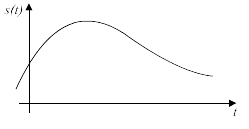Analog signal
An analog signal is a type of signal that represents data by continuous, variable quantities. Unlike digital signals, which represent data with discrete binary values (0s and 1s), analog signals are used to represent information through a continuous range of values. This makes them particularly useful in applications where information varies smoothly over time, such as in the transmission of audio and video signals, as well as in other forms of telecommunications and signal processing.
The main characteristic of an analog signal is that it is continuous. This means that it can take on any value within a given range. For example, in the case of an audio signal, the analog representation can capture the subtle nuances of sound, including volume and pitch, in a way that closely mimics the original source. This continuous nature allows for a high fidelity representation of real-world phenomena, but it also makes analog signals susceptible to noise and interference, which can degrade the quality of the signal.
Analog signals are often converted into digital signals to facilitate the processing, storage, and transmission of data. This conversion is done using an analog-to-digital converter (ADC), which samples the continuous analog signal at discrete intervals and quantizes the values into a series of binary numbers. Conversely, a digital-to-analog converter (DAC) is used to convert digital data back into an analog signal for playback or further analog processing.
The representation of analog signals can be done in various ways, including through the use of amplitude modulation (AM), frequency modulation (FM), or phase modulation (PM). These modulation techniques are fundamental to the transmission of data over various types of media, including radio waves, and have applications in radio broadcasting, television broadcasting, and cellular telephony.
Despite the advancements in digital technology, analog signals remain an essential part of modern electronics and communication systems. Their ability to provide a natural and detailed representation of real-world phenomena ensures their continued relevance in areas ranging from audio production to scientific measurement.
Search WikiMD
Ad.Tired of being Overweight? Try W8MD's physician weight loss program.
Semaglutide (Ozempic / Wegovy and Tirzepatide (Mounjaro / Zepbound) available.
Advertise on WikiMD
|
WikiMD's Wellness Encyclopedia |
| Let Food Be Thy Medicine Medicine Thy Food - Hippocrates |
Translate this page: - East Asian
中文,
日本,
한국어,
South Asian
हिन्दी,
தமிழ்,
తెలుగు,
Urdu,
ಕನ್ನಡ,
Southeast Asian
Indonesian,
Vietnamese,
Thai,
မြန်မာဘာသာ,
বাংলা
European
español,
Deutsch,
français,
Greek,
português do Brasil,
polski,
română,
русский,
Nederlands,
norsk,
svenska,
suomi,
Italian
Middle Eastern & African
عربى,
Turkish,
Persian,
Hebrew,
Afrikaans,
isiZulu,
Kiswahili,
Other
Bulgarian,
Hungarian,
Czech,
Swedish,
മലയാളം,
मराठी,
ਪੰਜਾਬੀ,
ગુજરાતી,
Portuguese,
Ukrainian
Medical Disclaimer: WikiMD is not a substitute for professional medical advice. The information on WikiMD is provided as an information resource only, may be incorrect, outdated or misleading, and is not to be used or relied on for any diagnostic or treatment purposes. Please consult your health care provider before making any healthcare decisions or for guidance about a specific medical condition. WikiMD expressly disclaims responsibility, and shall have no liability, for any damages, loss, injury, or liability whatsoever suffered as a result of your reliance on the information contained in this site. By visiting this site you agree to the foregoing terms and conditions, which may from time to time be changed or supplemented by WikiMD. If you do not agree to the foregoing terms and conditions, you should not enter or use this site. See full disclaimer.
Credits:Most images are courtesy of Wikimedia commons, and templates, categories Wikipedia, licensed under CC BY SA or similar.
Contributors: Prab R. Tumpati, MD

